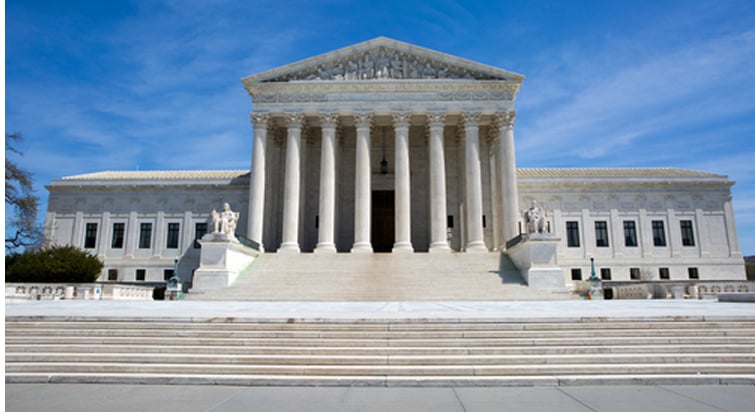In unusual lineup, Supreme Court sides with immigrant challenging removal

Image from Shutterstock.com.
The U.S. Supreme Court’s three liberal justices joined with three conservatives Thursday to rule for an immigrant who claimed that the government’s notices to appear for removal proceedings didn’t follow the statutory mandate.
In a majority opinion by Justice Neil M. Gorsuch, the Supreme Court ruled that the government had to supply all the required information in one notice, not the two notices that the government had sent to Agusto Niz-Chavez.
Gorsuch’s opinion was joined by Justices Clarence Thomas, Stephen G. Breyer, Sonia Sotomayor, Elena Kagan and Amy Coney Barrett. Justice Brett M. Kavanaugh dissented in an opinion joined by Chief Justice John G. Roberts Jr. and Justice Samuel A Alito Jr.
ABC News, the New York Times, the Volokh Conspiracy and the Associated Press are among the publications with coverage.
As a result of the government’s failure to include all the information in one notice, Niz-Chavez can seek cancellation of his removal. He hoped to stay in the United States under a statutory provision that allows discretionary relief from removal if certain conditions are met, including a requirement for continuous presence in the United States for at least 10 years.
The 10-year clock stops, however, when an immigrant receives “a notice to appear” containing the required information. The notice provision is known as the “stop-time rule.”
Niz-Chavez got his two notices in 2013, eight years after he entered the United States.
Gorsuch said the word “a” before “notice to appear” indicates that all the required information must be in one notice. The word “a” signals that Congress was referring to a discrete, countable thing, he said.
“Someone who agrees to buy ‘a car’ would hardly expect to receive the chassis today, wheels next week, and an engine to follow,” Gorsuch wrote.
“At one level, today’s dispute may seem semantic, focused on a single word, a small one at that,” Gorsuch said. “But words are how the law constrains power. In this case, the law’s terms ensure that, when the federal government seeks a procedural advantage against an individual, it will at least supply him with a single and reasonably comprehensive statement of the nature of the proceedings against him. If men must turn square corners when they deal with the government, it cannot be too much to expect the government to turn square corners when it deals with them.”
Kavanaugh’s dissent said he found the majority’s conclusion “rather perplexing as a matter of statutory interpretation and common sense.”
“If Congress actually wanted to require a single document to stop the 10-year clock, Congress easily could have (and surely would have) said so,” Kavanaugh wrote.
The case is Niz-Chavez v. Garland.



